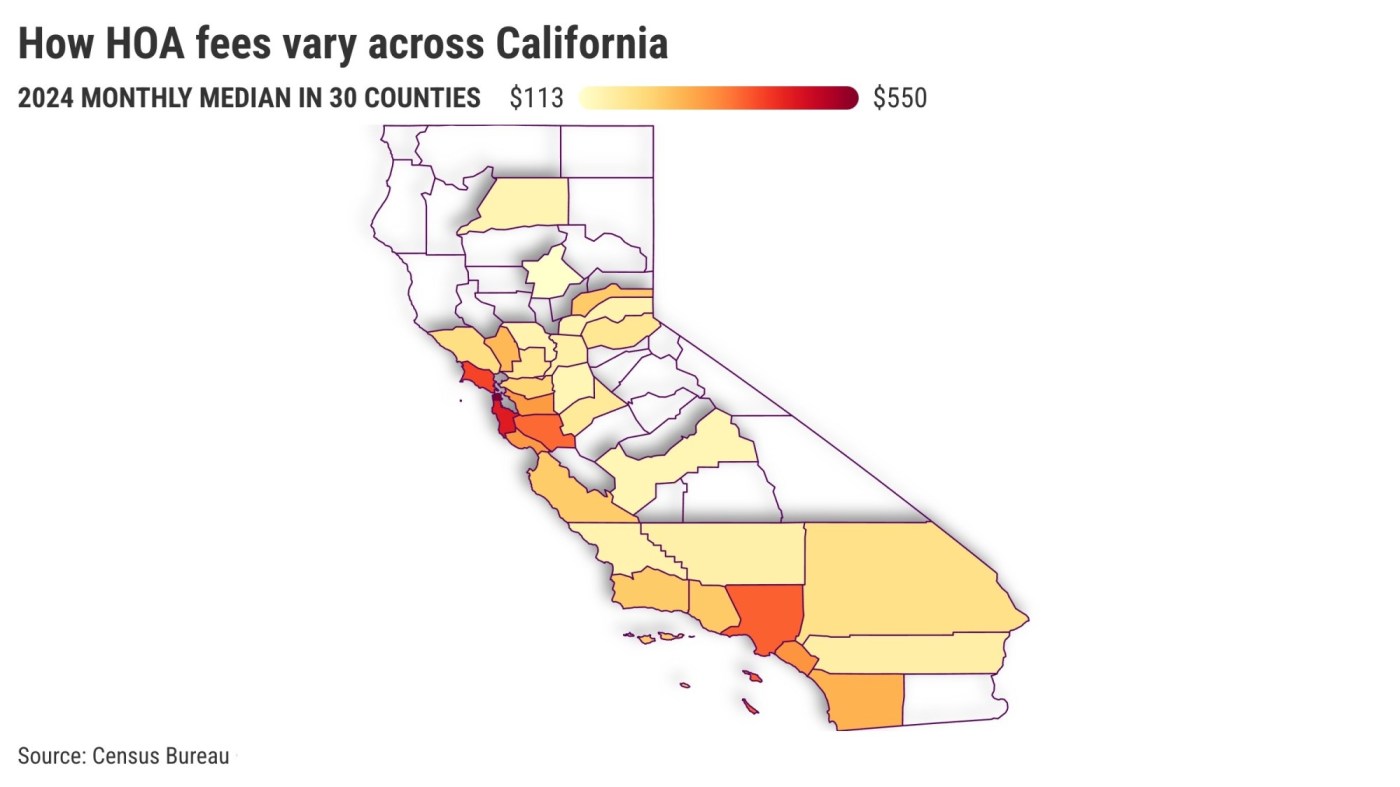California taxpayers send hundreds of millions of dollars every year to Learn4Life, one of the state’s largest charter school networks, with 65 locations that serve about 20,000 students each year.
For 24 years, Learn4Life schools have catered to some of the state’s most vulnerable young people — students behind on graduating, foster youth, students who are homeless, pregnant or living in poverty, students who just didn’t find traditional schools to be working for them. Learn4Life says it offers a lifeline to those students and promises to help them graduate when traditional high schools have failed them.
Related Articles
Cupertino-Toyokawa Sister Cities marks third-generation exchange
Action Day opens first dedicated Spanish immersion campus in Willow Glen
Felon enters bus carrying California students, asks to be hospitalized, police say
Charlie Kirk fallout hits California schools, where 20 teachers face discipline over posts
Fight at Gilroy school ends in off-campus shooting
“If this was not an option, I promise you, these kids will not be in school,” said Lindsay Reese, Learn4Life’s area superintendent, who oversees the network’s San Diego school locations.
But the Learn4Life model has drawn criticism from some of its own teachers and staff who for years harbored concerns about what they believe are questionable practices at the network’s schools.
More than a dozen current and former Learn4Life teachers and employees interviewed by The San Diego Union-Tribune said they think Learn4Life’s educational model has systematically failed many of its students.
They said such a model takes students who arguably need the most support and structure and gives them an education with little of either — one where they don’t have to see a teacher more than once a week, and where they learn on their own using take-home assignment packets.
Former Learn4Life teacher Kirsten Travis, photographed in Irvine on Aug. 25, 2025, had qualms about the quality of the education her students were getting, and about the attendance logs she says she was expected to approve. (John Gastaldo / For the San Diego Union-Tribune)
“They needed more school, not less school,” said Kirsten Travis, who taught at Learn4Life’s Assurance Learning Academy in Wilmington, in Los Angeles County’s South Bay, before she says she resigned in 2022; she’s now a school district teacher in Orange County. “It just felt like I’m perpetuating this problem of this kid falling further and further behind even when they’re trying. I remember feeling at the time, ‘This isn’t right, it shouldn’t be this way.’”
The teachers also depicted a Learn4Life administration that was preoccupied with increasing average daily attendance, or the average number of students who attend school on any given day, also known as ADA — the basis for school funding in California. For independent study schools like Learn4Life, students don’t have to physically show up anywhere to be counted as attending, and ADA is measured by how much work a student completes.
Reese, the area superintendent, said Learn4Life schools have been under constant attack from state lawmakers, journalists and others despite working hard to serve students who have been failed by traditional schools.
“It’s misrepresented as something nefarious, and it’s not,” Reese said of Learn4Life schools’ operations.
Executives of Lifelong Learning Administration Corporation, the nonprofit that ultimately manages the Learn4Life schools nationwide, did not respond to multiple inquiries about the schools’ operations.
Instead, their attorney Greg Bordo said he could allow the nonprofit to share only a one-sentence statement: “Learn4Life is proud of its 25-year record of helping tens of thousands of at-risk students earn their high school diplomas and obtain the skills needed to pursue meaningful careers.”
Bordo also criticized the Union-Tribune’s questions broadly, saying they appeared based on inaccurate and misleading information, without explaining how, and also pointed to one question in particular that he said “presupposes wrongdoing.”
“It is not Learn4Life’s obligation to take the substantial amount of time necessary to respond to your lengthy list of questions,” he wrote.
The trouble with graduation rates
Learn4Life’s education model has proven lucrative for the brand and the businesspeople who run it.
The groups of students that Learn4Life targets for enrollment — such as students from low-income families and foster youth — generate 20% to 65% more per-pupil state funding than their peers do, as much as $23,000 total per high school student, based on the state’s funding formula.
Learn4Life’s California schools altogether brought in about $451 million in government funding during the 2023-2024 school year, the latest year for which the schools’ audits are available.
The schools have also enriched the nonprofit that effectively runs them, Lifelong Learning, which takes a cut of their revenue while operating out of public view.
Lifelong Learning’s net assets have doubled from $18 million in 2021 to $36 million last year, tax filings show. Its co-founder and former CEO, Dante Simi, averaged $600,000 in pay each year during the last four years of his time there.
But Learn4Life schools’ work has been less fruitful for students, state data suggests. Based on traditional graduation metrics, its schools fall behind most other high schools — including most of those that serve similar student populations.
As of 2024, California’s Learn4Life schools altogether graduated only 29% of students within five years of starting high school, according to state education department data. That’s lower than the statewide average of 54% for all alternative high schools, both district-run and charter, which serve similar student populations, state data shows.
Learn4Life has argued it’s not fair to judge its schools using traditional graduation rate metrics, because it serves “the toughest student population.” Students enroll on average at least a year behind in credits, and most are 17 or 18 years old. Most read at a fifth-grade level and come from low-income families; 16% are pregnant or parenting, and 10% are homeless, foster or migrant students, Learn4Life says on its website.
Learn4Life argues it’s fairer to look at its one-year graduation rate — or the percentage of its high school seniors who graduate in any given year. The network’s average one-year graduation rate was 89%, as of 2024; that’s better than the statewide average of 72% for district-run and charter high schools.
The one-year graduation rate is a more appropriate measure for alternative schools because it better accounts for students whose schooling was interrupted, said Kristine Shipman, senior director for the Data and Impact Center of Excellence at the San Diego County Office of Education.
The one-year rate also helps account for the fact that students often enroll in alternative schools already behind on graduating within four or five years. It “tends to be the most representative of the work that is being done” by the school, Shipman said.
However, alternative schools differ on how they count students as seniors for this one-year rate, Shipman added. “It is a little bit of a gray area,” she said.
Some schools may classify students as seniors based on their age; others may classify them based on how many credits they’ve earned. For example, a school could define seniors as any student who comes within a certain number of credits of graduating — meaning the only students being counted in the rate are those who are close to a diploma, while those who are struggling are by definition excluded.
At Learn4Life’s Innovation High San Diego school, for example, students are counted as seniors once they come within 40 credits of graduating, out of the 210 they need to graduate. The school says that based on that metric, it graduated 95% of its 678 seniors last school year.
Learn4Life Superintendent Shellie Hanes said placing students in grade levels based on credits completed is fairer to them than placing them based on their age — in the latter format, students can advance to the next grade level even if they’re not completing enough credits to stay on track.
Lifelong Learning headquarters in Lancaster on Aug. 29, 2025. (Miguel Vasconcellos / For The San Diego Union-Tribune)
Three years ago, California asked the federal government for permission to use the one-year graduation rate as an accountability measure for alternative schools. The U.S. Department of Education denied its request, citing the federal program dedicated to educating students from low-income families.
“Setting different, lower expectations for some students and schools is against the purpose of Title I,” which is “to provide all children significant opportunity to receive a fair, equitable, and high-quality education, and to close educational achievement gaps,” the agency told California officials at the time.
A flexible learning model
Learn4Life has been around almost as long as charter schools have existed in California.
Its first school opened in 2001 in the Antelope Valley, on the western edge of the Mojave Desert in northeastern Los Angeles County. Since then, Learn4Life says it has served 70,000 students. Today, within San Diego County alone, it operates locations in San Diego, Chula Vista, El Cajon, Vista, Escondido, Lakeside and Lemon Grove, according to its website.
As privately run public schools, each Learn4Life school must obtain a charter from an authorizer, usually a school district, that lets it operate and is tasked with holding it accountable.
Learn4Life schools have obtained charters mostly from small districts with fewer than 2,000 students, public records show, but they have opened most of their school centers outside the boundaries of those districts. Going to small districts for charter authorization has been a tactic common among other large, non-classroom-based charter networks; such districts have a financial incentive to authorize charter schools, which pay them oversight fees.
Learn4Life schools don’t have traditional school days, bell schedules or daily classroom instruction. Instead, they are what’s called non-classroom-based schools, meaning most of their instruction happens outside a typical classroom setting. And they provide a type of education under California law called independent study, in which a student primarily learns on their own.
A Learn4Life building near the headquarters of Lifelong Learning, the nonprofit that manages much of its schools’ operations, in Lancaster on Aug. 29, 2025. (Miguel Vasconcellos / For The San Diego Union-Tribune)
Independent study was originally a niche education model intended for students whose personal endeavors required flexible schooling, such as aspiring Olympic athletes and child actors. But it has become popular for its flexibility and spawned a large sector of California charter schools that offer it widely.
At Learn4Life, teachers don’t teach students all the curriculum or hold regular classes. Rather, they assign students work packets or online assignments to complete on their own.
Students can drop in to a local center to meet one-on-one with a teacher for help. There are also optional small-group instruction — mini classes held about twice a week — plus more structured online courses and career technical education programs. But students primarily learn on their own.
Learn4Life’s Chula Vista learning center — one of several that make up one Learn4Life school in San Diego — enrolls 430 students. A few dozen were there on a recent Tuesday, working quietly with their teachers, with each other or on their computers at pods of desks placed around the open rooms. Teachers held two optional small-group classes — one was teaching English for non-English speakers to 11 students, the other taught math to six.
The center has a school counselor and psychologist, a computer lab with 3D printing and robotics, and another room that doubles as a music studio and an area with a playpen for parenting students. In each building, a fridge offers free sandwiches and salads for hungry students; the parenting area offers free diapers and formula. The school partners with community groups that offer students mentoring and other support.
The idea of Learn4Life’s independent study is to give students flexibility so they can attend school and work on their own schedule. That’s meant to help students who would have trouble attending school full time, whether because they are working, taking care of children or handling other obligations, and its use of paper assignment packets is intended to help students who lack internet access.
Learn4Life’s model has worked well for certain students like Ronaldo Gonzalez, who graduated in 2020 from its Antelope Valley Learning Academy in Los Angeles County. He worked for his father’s construction company in high school, and he needed a flexible schedule.
“I would happily redo it in a heartbeat,” said Gonzalez, now 27 and a security guard. “I actually enjoyed going to the high school.”
What he liked most were his teachers, he said, who never gave up on him and who saw his potential. Gonzalez loves learning, and if anything, he would have preferred more hands-on learning and fewer paper packets. He said he completed about one a week, and they were “quite easy.”
But it didn’t work that way for all students, several Learn4Life teachers said.
‘I felt like a debt collector’
Independent study works when a student has the self-discipline, skills and resources to learn on their own, the teachers said. But with many of their students, it was tough to get them to show up, turn in work or even return a phone call.
There were students who wouldn’t turn in work for weeks because they were homeless, in juvenile detention, enduring abuse at home or dealing with other challenges, teachers said. Some didn’t see the point of graduating. Some couldn’t understand the packets because they lacked the reading skills.
Some teachers say Learn4Life’s model could exacerbate the problem by essentially lowering expectations for students. The students don’t have to come in to school every day and don’t always get regular instruction from teachers, and their credit workload can be lower than that of traditional high school students.
Kirsten Travis, right, and Jeffrey Coté, pictured in Irvine on Aug. 25, 2025, both used to teach for Learn4Life and are now public school teachers in Orange County. (John Gastaldo / For the San Diego Union-Tribune)
“What they need is probably a more structured environment, and you’re putting them in a very unstructured environment,” said Kristine Parsons, a teacher who worked for five years at Learn4Life’s Antelope Valley Learning Academy in Palmdale before she said she quit in 2022.
State law establishes no requirement for how often students in independent study must meet with a teacher. None of the California Learn4Life schools’ policies published online give any such guidance, either. Staff at the Chula Vista Learn4Life learning center said recently that students are supposed to meet with their teacher at least once a week.
But state law does give some guardrails to hold independent-study students accountable. For example, students must sign an agreement with their teacher that sets minimum schoolwork requirements. Schools must also adopt policies outlining intervention strategies if a student continues to miss schoolwork.
Learn4Life’s personalized learning policies say staff will convene intervention meetings and offer more support if a student misses at least three assignments within a month. If continued intervention doesn’t work, the policies say Learn4Life may drop the student.
Several teachers said much of their time was spent calling students who weren’t turning in work or had gone missing. Students blocked their phone numbers or hung up on them, so teachers would ask a colleague to call.
“I felt like a debt collector,” Parsons said.
Still, there were good things about working for Learn4Life, teachers told the Union-Tribune. Staff cared about the students and worked together to support them. Teachers collected clothes to offer for free to students, and they forged connections with students that lasted for years after their graduations.
But ultimately the constant slog of begging students to come to school, and then feeling blamed by administrators when they didn’t, helped drive some Learn4life teachers to quit.
“I was tired of the grind of one credit a month and calling students,” said Jeff Coté, a Learn4Life teacher of 11 years who worked for Assurance Learning Academy before he says he quit in 2022; he is now a district school teacher in Orange County. “It didn’t feel genuine.”
Reese, the area superintendent, and Hanes, the Learn4Life superintendent, said calling students who are not turning in work is a schoolwide effort and a necessary part of the job.
All school staff, not just teachers, help call students, and if they don’t succeed, they’ll visit students at home, they added. The schools train staff on how to better serve students who have faced trauma, and they offer support to help students complete their work, such as tutoring, they said.
“Is there pressure to call? 100%, and I wouldn’t back away from that,” Hanes said.
‘You gotta get ADA’
At Learn4Life, educators said they felt a constant pressure from administrators to post high average daily attendance numbers, which would boost Learn4Life’s revenue.
“You gotta get ADA. That was the real driver,” said Patrick Wright, who taught at Learn4Life’s Desert Sands Charter High for 18 years until he says he resigned in 2023.
Some Learn4Life schools have filed average daily attendance numbers that even exceed the numbers of students they enrolled — a phenomenon so unusual it merits investigation, state school auditing officials told the Union-Tribune.
“ADA is a subset of enrollment, so by its very definition, we wouldn’t expect ADA to ever be greater than enrollment,” said Mike Fine, CEO of the state’s school auditing agency called FCMAT.
Four Learn4Life schools — Desert Sands, Vista Real, Mission Academy and Mission View — reported on their 2023-2024 fiscal year audits that they collected attendance funding for more students than were cumulatively enrolled at any point, for any length of time, during the entire calendar year.
The disparity was as much as 847 students for Desert Sands, about 300 students each for both Mission Academy and Vista Real and 49 for Mission View.
Altogether, the differences between those schools’ cumulative enrollments and student attendance figures constitute at least $18.6 million in state funding, based on the state’s base per-pupil funding rate.
The state does not track how much it’s paying out for every individual student in California, because its education funding system and its student enrollment system are not integrated. So it has no way of knowing on its own whether it is paying more funding for a student than it should be — a problem that was spotlighted by the A3 charter fraud case, in which charter operators manipulated enrollment to get more funding than they were supposed to.
But charter schools’ authorizers and county offices of education should be investigating any discrepancies between ADA and cumulative enrollment, Fine said.
William S. Hart Union High School District in Los Angeles County, which oversees Mission View, said it had already asked the school about the discrepancy. The charter attributed it to its use of multiple calendar tracks for enrolling students and the transient nature of its student population, which it said causes enrollment fluctuations that affect ADA, Jon Carrino, assistant superintendent of business services, said in an email.
In response to an inquiry about the discrepancies, Bordo, Lifelong Learning’s attorney, accused the Union-Tribune of having “little or no understanding of how charter school funding works” and objected to the question, writing that it “presupposes wrongdoing and would lead a reasonable reader to assume that (the Union-Tribune) is accusing L4L of illegally collecting state funds.”
He said the question reflected “a mischaracterization of the distinction between average daily attendance (ADA) and enrollment, particularly for schools operating year-round,” and that it could “mislead the public into believing that L4L is breaking the law, which is categorically false.”
A certificate given to retired Learn4Life English teacher Patrick Wright recognizing 15 years of working for the charter school system. (Miguel Vasconcellos / For The San Diego Union-Tribune)
At Learn4Life schools, teachers said the need for high attendance was reinforced in talks from administrators and in their own performance evaluations. The focus was often at odds with what students needed to learn and to graduate, the teachers said.
When they worked at Learn4Life, they said the minimum amount of work a student had to turn in to collect average daily attendance funding for them was one credit per month — the equivalent of one work packet. On a recent Tuesday, Reese said the minimum expected of a student at San Diego schools is currently two credits a month.
If Learn4Life students were not completing work, teachers said they called and begged them to turn in at least one packet a month — even though at that rate they would have a very hard time finishing high school and graduating in any reasonable amount of time.
“Accepting one credit a month is just not helping the student,” Coté said. “We would tell students, ‘At this rate, you’re going to graduate when you’re 30. But obviously you’re not going to do that, you’re just going to drop out before then.’”
To get kids to turn in work, some teachers said they appealed to kids with offers of easy credits — electives like physical education or art history.
“If I have kids who are very hard to reach, aren’t self-motivated, aren’t doing the work … I would be begging, ‘Please, please, please do this P.E. credit,’” Parsons said. “I had these easy credits built in. ‘Please, just sit at my desk for an hour and turn it in by Friday so I can at least have ADA.’”
But Parsons acknowledged that relying on those easy credits for attendance would doom students to failure, because they needed to finish core credits like math and English in order to graduate.
Retired English teacher Patrick Wright worked for the Learn4Life charter school system for 18 years before retiring in 2023. (Miguel Vasconcellos / For The San Diego Union-Tribune)
Wright thinks the practice of requiring only one credit per month may have helped Learn4Life schools increase revenue but failed to prepare students for real life, contrary to the network’s brand name.
“It’s such an attack against the students’ dignity,” he said. “We didn’t treat them like we should’ve.”
Reese said the San Diego schools work hard to raise their credit completion rates — metrics that staff “watch like a hawk.” Learn4Life’s San Diego students complete on average about four credits every month, she said.
Last school year, Learn4Life students statewide completed 3 1/2 credits on average per learning period, which is about one month — up from three credits each learning period the previous year, according to their state accountability plans.
‘Doing the wrong thing for money’
Teachers also had qualms about the way they say they were told to record students’ attendance for their average daily attendance numbers.
Students were expected to fill out a learning log to record every day on which they did schoolwork, teachers said. Those logs were important, they said, because they were the basis for which Learn4Life submits student attendance numbers to the state for its average daily attendance.
But some teachers told the Union-Tribune that on several occasions, they believed the logs reflected inaccurate attendance numbers.
The teachers said they were expected by their principals to always turn in learning logs that were filled out for every school day, even when they knew the work that students had submitted was not equivalent to the days of attendance for which they were filing. That way, they said, the learning log could generate full ADA for that student.
“Even if the student barely did enough work to count as one day’s worth of work, the students and teachers were strongly encouraged to sign off for the entire learning period which was usually 18, 19 or 20 days,” said Steven Lee, who taught for 17 years at Antelope Valley Learning Academy. He unsuccessfully sued Lifelong Learning after being fired in 2022.
“Learn4Life wanted the students to sign off for all of the days … so the school could collect the maximum ADA for the learning period,” Lee said.
When a student completed only one credit a month, especially one like P.E., Parsons knew it couldn’t take more than a few days to complete. She had completed a P.E. packet before, and it took her half an hour. But when she submitted partially filled out learning logs, she said her manager returned the logs to her and told her to claim attendance for all days of the month.
Parsons said she was told to claim the entire month of attendance “so we could send it off to the state, when I know that one credit wasn’t equivalent to what the affidavit was saying was done.”
Teachers said they had qualms about what they felt pressured to record on their attendance logs but felt their jobs depended on it.
“The (learning log) is a good example of … I think I’m doing the wrong thing for money,” Travis said.
Jeff Coté left his job teaching at a Learn4Life school in 2022 after more than a decade. “I was tired of the grind of one credit a month and calling students,” he said. “We didn’t graduate enough students.” (John Gastaldo / For the San Diego Union-Tribune)
For independent study programs like Learn4Life, state law requires teachers to personally judge how much student work should constitute a full school day’s attendance. Unlike with school districts, which must have at least three hours of instruction in a school day, state law sets no minimum school day for charter schools.
As a result, independent study charter schools can technically submit full ADA for any amount of time a student spends on schoolwork — it just has to be based on the teacher’s judgment of the time value of the student’s work.
Reese argues that this sets a higher bar for independent study programs than for traditional schools, because students must produce work for Learn4Life to receive ADA funding. By contrast, she said, traditional schools can collect full funding for a student who comes to school every day but doesn’t produce any work.
Reese said that currently learning logs are completed electronically by the student, then reviewed by the teacher. She said the logs are filled out according to how much work a student did and are not required to have every day filled.
Two lawsuits filed against Learn4Life in February by former educators of Learn4Life’s Kings Valley Academy II near Fresno underscore the focus on high attendance. Counselor Sophia Aguilar and teacher Lindsey Hoskins said in separate lawsuits that it was common practice at their school for teachers to inflate ADA.
The schools and Lifelong Learning “knowingly presented (or caused to be presented) falsified attendance records to the state … by manipulating student credits for the purpose of obtaining increased educational funding,” their complaints alleged.
One practice the two lawsuits described was “banking” credits, where a student’s earned credits would be artificially moved from one learning period to another to boost student attendance numbers. Aguilar and Hoskins say they were fired last year after reporting concerns about these practices and reporting unrelated harassment by other employees.
Lifelong Learning did not respond to the Union-Tribune’s questions about attendance practices, but an attorney for Kings Valley Academy II generally denied the allegations in a response to Aguilar’s and Hoskins’ lawsuits. In a January 2024 statement filed in defense of Lee’s lawsuit, Area Superintendent Taera Childers said that while teachers are evaluated partly on their students’ credit completion numbers, banking credits is prohibited.
In the end, teachers who spoke with the Union-Tribune said they recall few of their students graduating from Learn4Life.
Some students returned to their district’s high school. Others stopped coming to Learn4Life and disappeared.
Parsons estimates fewer than 10% of her students graduated from Learn4Life. In the seven years Travis taught there, she estimates she saw only 20 of hers earn a diploma. And for Coté, the drumbeat of students lost to attrition ultimately led him to leave Learn4Life after more than a decade.
“We definitely had a lot of good moments where kids would graduate, families would be happy — but I felt like that wasn’t enough,” he said. “We didn’t graduate enough students.”





